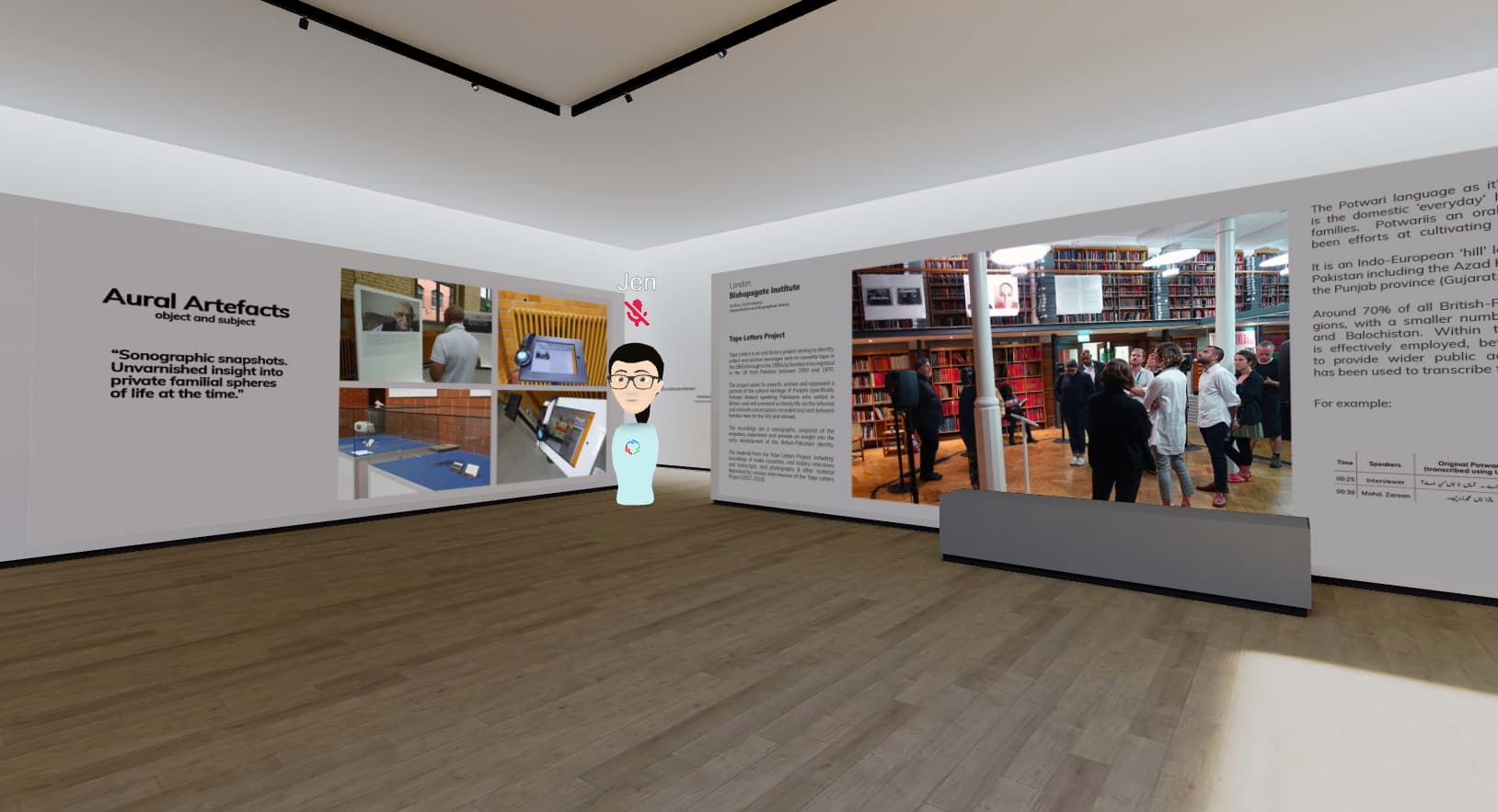Back to Use Cases
Custom Environments
Tape Letters Project
Tape Letters is an oral history project that archives messages on cassette tapes from families who migrated to the UK between 1950 and 1970. Curators made a provocative, virtual exhibition to represent this project virtually. This immersive exhibition presents messages from cassette tapes, creating an emotional journey through history, memory, and the immigrant experience.

1950-1970
Period
Oral History
Type
Virtual Exhibition
Format
Key Highlights
Oral history archive
Migration stories 1950-1970
Cassette tape messages
Provocative virtual exhibition
Frame Features Used
Spatial Collaboration
Teams work together in immersive 3D environments that feel natural.
Browser-Based Access
No downloads required. Join from any device with a web browser.
Persistent Spaces
Virtual environments that persist between sessions for ongoing work.
Ready to Transform Your Team?
Join Tape Letters Project and hundreds of other organizations using Frame for immersive collaboration.